Are you tired of being overwhelmed by a flood of data, struggling to make sense of the countless metrics that come with your marketing campaigns?
Are you searching for a solution to decipher the success of your website, campaigns, newsletters, and social media channels?
If yes, then this is the guide you’ve been waiting for.
The great news is that I’ve scoured the digital landscape, meticulously testing numerous analytics tools, and I’m excited to present to you the 15 best digital analytics tools of 2023 that have been tried and tested. These tools are purposefully designed to simplify the analysis of your marketing data, empowering you with invaluable insights that lay the foundation for data-driven decision-making.
Whether you hold the title of CMO, Marketing Director, or you’re a marketer yearning to unlock the true potential of your marketing campaigns, take the next step and immerse yourself in this comprehensive guide.
In this blog, you’ll also discover a plethora of personal experiences, diligently researched recommendations, and captivating anecdotes that will captivate your attention and propel you toward data-driven success.
Don’t allow data to overpower you any longer.
What Are the Best Digital Analytics Tools?
Before we dive into the world of digital analytics tools, let’s first establish what they are. Digital analytics tools are powerful software solutions that enable marketers to collect, analyze, and interpret data from various digital sources such as websites, campaigns, social media, and more.
These tools provide invaluable insights that help marketers make data-driven decisions and optimize their marketing strategies.
Now, let me guide you through my unique process of discovering the best digital analytics tools.
Through extensive research and personal experiences, I’ve curated a list of the top tools that have proven their effectiveness in the ever-evolving landscape of data analysis.
Join me as we embark on this journey to find the perfect tools for your marketing success.
1. Supermetrics
Supermetrics is a powerful data integration tool that simplifies the process of gathering and analyzing marketing data. With Supermetrics, you can seamlessly connect and pull data from various sources such as Google Analytics, Facebook Ads, LinkedIn, and more into one centralized platform. It eliminates the need for manual data extraction and enables you to generate comprehensive reports and gain valuable insights to optimize your marketing campaigns.
Who Created Supermetrics?
Supermetrics was created by Mikael Thuneberg in 2013. It was initially developed to solve the data reporting challenges faced by online marketers. Since then, Supermetrics has grown into a widely recognized and trusted tool used by professionals across industries and job positions.
Supermetrics Features
Supermetrics offers a range of features that elevate your data analysis and reporting capabilities. Let’s explore some of its key features:
- Data Integration
- Automated Data Refresh
- Customizable Reporting
- Data Transformation and Manipulation
- Data Visualization
Supermetrics Pricing
Supermetrics offers different pricing plans to cater to various business needs. The pricing is based on factors such as the number of users, data sources, and data refresh frequency. For detailed pricing information, visit the Supermetrics website.
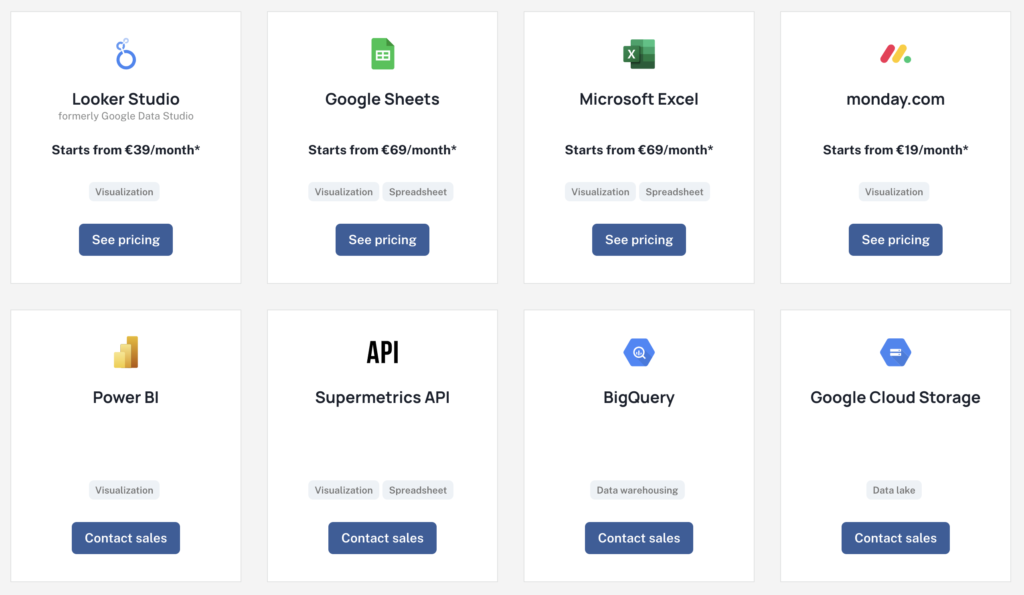
Supermetrics Pros and Cons
When considering any tool, it’s essential to weigh its pros and cons. Let’s explore the advantages and disadvantages of Supermetrics.
Supermetrics Pros
- Streamlines data integration and reporting processes
- Saves time by automating data extraction and refreshing
- Provides a centralized platform for data consolidation and analysis
- Offers a wide range of data sources and integration options
- Supports customizable reporting and data transformation
Supermetrics Cons
- Pricing can be a consideration for smaller businesses or individual marketers
- Advanced data transformation may require technical knowledge
- Integrations may vary in terms of available metrics and features
- Steeper learning curve for users who are new to data analysis tools
Despite these considerations, Supermetrics remains a leading choice for marketers seeking efficient data integration and analysis capabilities.
2. Hotjar
Hotjar is a powerful user behavior analytics and feedback tool that helps you understand how visitors interact with your website. It provides valuable insights into user behavior, allowing you to optimize your website’s performance, user experience, and conversion rates. With Hotjar, you can visualize user journeys, gather feedback, and make data-driven decisions to improve your online presence.
Who Created Hotjar?
Hotjar was created by David Darmanin and his team in 2014. Since then, it has become widely adopted by professionals across industries and job positions, including marketers, UX designers, product managers, and website owners.
Hotjar Features
- User Behavior Insights
- Heatmaps and Recordings
- User Feedback and Surveys
- Conversion Funnel Analysis
- Collaboration and Reporting
Hotjar Pricing
Hotjar offers different pricing plans based on the number of page views per day. They have plans for businesses of all sizes, including free and paid options. For detailed pricing information, visit the Hotjar website.
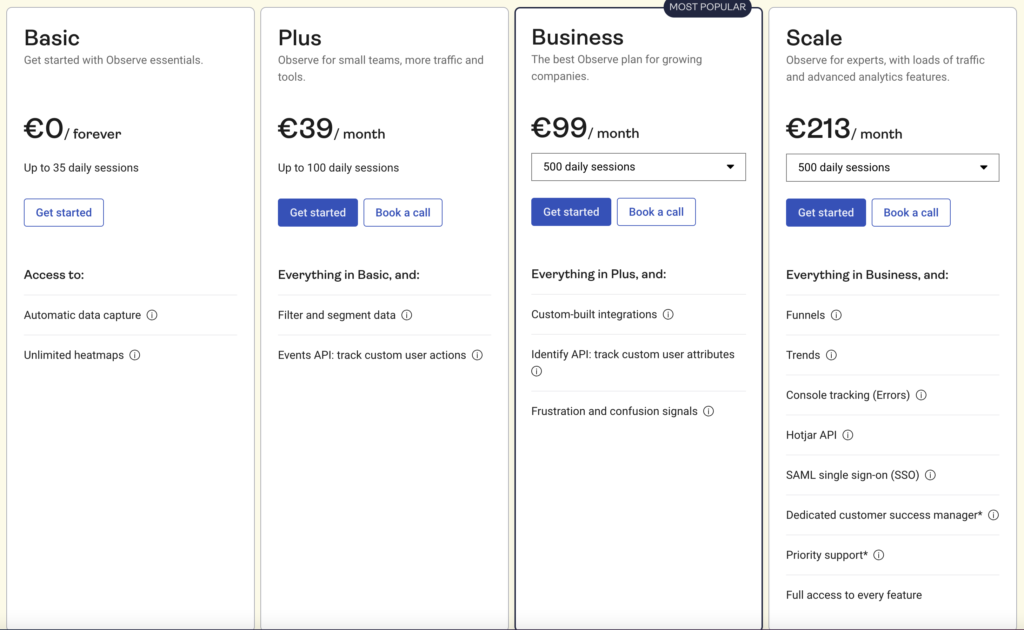
Hotjar Pros and Cons
When considering Hotjar as a user behavior analytics tool, it’s essential to assess its pros and cons. Let’s explore the advantages and potential drawbacks.
Hotjar Pros
- Provides valuable insights into user behavior and website performance
- Visual heatmaps and session recordings offer a clear view of user interactions
- Customizable feedback polls and surveys help gather user opinions
- Conversion funnels help optimize user flows and increase conversions
- Collaboration features and reporting capabilities facilitate data sharing and analysis
In summary, Hotjar is a powerful tool that empowers you to understand user behavior and make data-driven decisions. However, it’s important to consider the potential limitations as well.
Hotjar Cons
- Pricing may be a consideration for businesses with high traffic volumes
- Some features, such as session recordings, may require significant storage space
- Integration options with other marketing tools may be limited
Despite these considerations, Hotjar remains a popular choice for businesses looking to gain valuable insights into user behavior and enhance their website’s performance.
3. Amplitude
Amplitude is a comprehensive product analytics platform that helps businesses understand user behavior, measure product performance, and drive data-informed decision-making. It provides powerful insights into user engagement, retention, and conversion rates, enabling businesses to optimize their products and deliver exceptional user experiences.
Who Created Amplitude?
Amplitude was created by Spenser Skates, Curtis Liu, and Jeff Wang in 2012. Since its inception, Amplitude has gained popularity across various industries and is utilized by professionals in product management, growth, marketing, and data analysis roles.
Amplitude Features
- User Behavior Understanding
- Data-Driven Decision-Making
- User Segmentation
- Funnel Analysis
- Collaboration and Integration
Amplitude Pricing
Amplitude offers various pricing plans tailored to the needs of different businesses. The pricing is based on factors such as the number of monthly tracked users and the desired level of support. For detailed pricing information, it is best to visit the Amplitude website or contact their sales team.
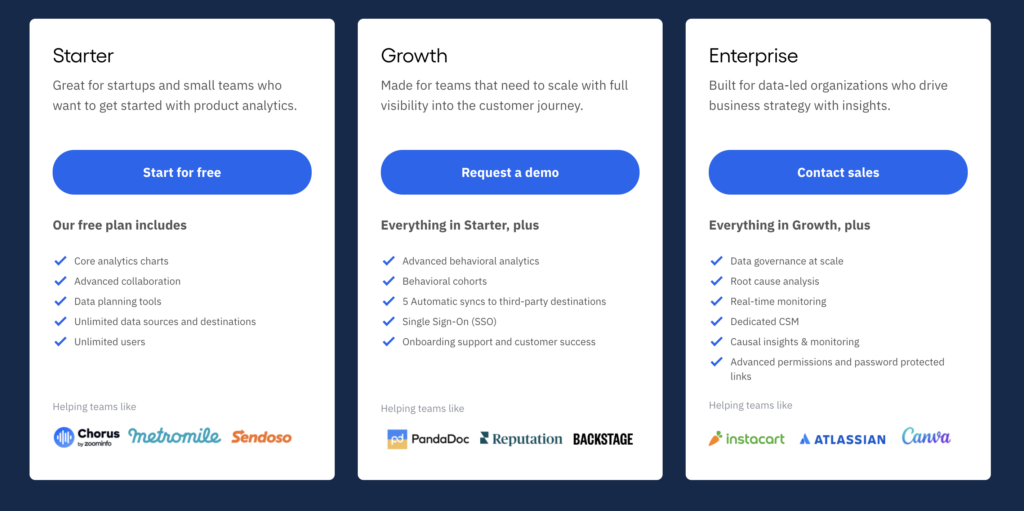
Amplitude Pros and Cons
Understanding the pros and cons of Amplitude is crucial when evaluating its suitability for your analytics needs.
Amplitude Pros
- Provides deep insights into user behavior and product performance
- Enables data-driven decision-making through comprehensive analytics and visualizations
- Supports user segmentation for personalized experiences and messaging
- Offers powerful funnel analysis for optimizing conversions and user journeys
- Facilitates collaboration and integration with other tools and platforms
Amplitude Cons
- The learning curve may be steep for users who are new to advanced analytics platforms
- Pricing plans can be costly for smaller businesses with limited budgets
- Some users may require additional training and support to fully leverage the platform’s capabilities
Despite these considerations, Amplitude remains a leading choice for businesses looking to gain actionable insights from their product data and make informed decisions to drive growth and user satisfaction.
4. Funnel.io
Funnel.io is a data integration and analytics platform that simplifies the process of collecting, transforming, and visualizing marketing data from various sources. It allows businesses to consolidate their marketing data into one centralized location, providing comprehensive insights into marketing performance and ROI. With Funnel.io, you can easily track and analyze data from multiple channels, such as advertising platforms, social media, e-commerce, and more, enabling you to make data-driven decisions and optimize your marketing efforts.
Who Created Funnel.io?
Funnel.io was created by Fredrik Skantze, Per Made, and Erik Berlin in 2014. Since its inception, Funnel.io has gained popularity among marketers, data analysts, and marketing teams across various industries, including e-commerce, digital advertising, SaaS, and retail.
Funnel.io Features
Funnel.io is equipped with a variety of features that streamline data integration and analytics. Let’s explore some of its key features:
- Data Connectors
- Data Transformation
- Visualization and Reporting
- Data Mapping and Customization
Funnel.io Pricing
Funnel.io offers pricing plans based on your specific needs, including factors such as the number of data sources, data volume, and additional features required. For detailed pricing information, it is recommended to visit the Funnel.io website or contact their sales team.

Funnel.io Pros and Cons
Understanding the pros and cons of Funnel.io is important when considering it as a data integration and analytics solution.
Funnel.io Pros
- Simplifies the process of data integration from multiple marketing platforms.
- Provides comprehensive insights into marketing performance and ROI.
- Customizable data mappings and flexible reporting options.
- Saves time and resources through automation and data transformation.
- Scalable for businesses of all sizes.
In summary, Funnel.io offers a powerful solution for consolidating and analyzing marketing data, providing businesses with valuable insights to optimize their marketing strategies and drive growth.
Funnel.io Cons
- Pricing may be a consideration for small businesses with limited budgets.
- Certain data sources may require additional setup or configuration.
- Advanced customization and data manipulation may require technical expertise.
Despite these considerations, Funnel.io remains a popular choice among marketers and data analysts looking to streamline their data integration process and gain actionable insights from their marketing data.
5. Mixpanel
Mixpanel is a powerful product analytics tool that helps businesses understand user behavior and track key metrics to improve their products and user experiences. With Mixpanel, you can gather data from various sources, such as websites and mobile apps, and analyze user interactions, conversions, and retention rates. It provides valuable insights that enable businesses to make data-driven decisions and optimize their product strategies.
Who Created Mixpanel?
Mixpanel was created by Suhail Doshi and Tim Trefren in 2009. Since then, Mixpanel has been widely adopted by businesses across industries, including e-commerce, SaaS, mobile apps, and online marketplaces. It is used by product managers, marketers, and data analysts to gain deep insights into user behavior and drive product improvements.
Mixpanel Features
Mixpanel offers a range of powerful features to analyze and understand user behavior. Let’s explore some of its key features:
- Event Tracking
- Funnels
- Retention Analysis
- A/B Testing
- User Segmentation
Mixpanel Pricing
Mixpanel offers pricing plans based on the number of data points and the features required. The pricing structure is customizable based on your specific needs. For detailed pricing information, it is recommended to visit the Mixpanel website or contact their sales team.
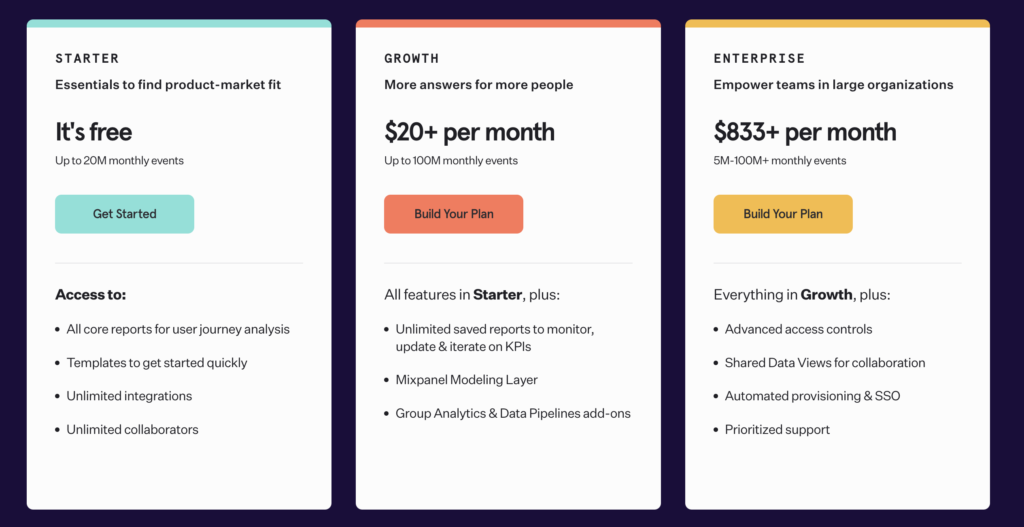
Mixpanel Pros and Cons
It’s important to understand the pros and cons of Mixpanel when considering it as a product analytics tool.
Mixpanel Pros
- Robust event tracking and analysis capabilities.
- Powerful retention analysis and cohort segmentation.
- A/B testing for data-driven experimentation.
- User-friendly interface and intuitive data visualization.
In summary, Mixpanel provides businesses with the tools and insights to track, analyze, and optimize their product performance and user experiences. With its range of features and capabilities, Mixpanel is a valuable asset for businesses looking to make data-driven decisions and improve their products.
Mixpanel Cons
- Learning curve for advanced configuration and analysis.
- Pricing can be a consideration for smaller businesses.
- Limited integrations with certain platforms and technologies.
Despite these considerations, Mixpanel remains a leading choice for businesses seeking comprehensive product analytics and user behavior insights.
6. Adobe Analytics
Adobe Analytics is a comprehensive analytics platform that provides businesses with valuable insights into customer behavior, website performance, and marketing effectiveness. It enables businesses to collect, analyze, and visualize data from various sources to make informed decisions and optimize their digital experiences.
Who Created Adobe Analytics?
Adobe Analytics is a product developed by Adobe Systems Incorporated, a leading software company known for its creative and digital marketing solutions. With its robust analytics capabilities, Adobe Analytics is widely used across industries, including e-commerce, media and entertainment, financial services, and more. It is utilized by various job positions, such as digital marketers, data analysts, web analysts, and marketing managers, to drive data-driven strategies and enhance customer experiences.
Features
Adobe Analytics offers a range of powerful features to help businesses gain deep insights into their data. Let’s explore some of its key features:
- Data Collection and Integration
- Real-Time Reporting
- Segmentation and Customer Analysis
- Attribution Modeling
- Data Visualization and Dashboards
Adobe Analytics Pricing
Adobe Analytics offers flexible pricing options tailored to the specific needs and requirements of businesses. The pricing structure may vary based on factors such as the level of access, data volume, and additional features required. To get detailed pricing information, it is recommended to visit the Adobe Analytics website or contact their sales team.
Adobe Analytics Pros and Cons
Before considering Adobe Analytics as a solution, it’s important to explore its pros and cons.
Adobe Analytics Pros
- Comprehensive analytics capabilities across multiple channels and platforms.
- Advanced segmentation and customer analysis.
- Real-time reporting for immediate insights.
- Integration with other Adobe Marketing Cloud solutions.
- Powerful data visualization and reporting features.
In summary, Adobe Analytics empowers businesses with actionable insights to enhance their digital strategies, improve customer experiences, and drive growth.
Adobe Analytics Cons
- Learning curve for new users and complex implementation process.
- Pricing can be higher compared to some other analytics solutions.
- Advanced features may require technical expertise.
- Limited support for certain data sources and integrations.
Despite these considerations, Adobe Analytics remains a trusted choice for businesses seeking robust analytics capabilities and the ability to harness data to make informed decisions.
7. Heap
Heap is a user analytics and product intelligence platform that helps businesses understand and optimize user behavior on their websites and mobile apps. It automatically captures every interaction and event on your digital properties, allowing you to analyze and gain insights without the need for manual tracking or tagging.
Who Created Heap?
Heap was created by a team of data scientists and engineers with the goal of simplifying analytics and making data-driven decision-making accessible to businesses of all sizes. Heap is widely used across industries such as e-commerce, software as a service (SaaS), media and entertainment, and more. Various job positions, including product managers, data analysts, marketing professionals, and UX designers, rely on Heap to understand user behavior and improve their digital experiences.
Features
Heap offers a range of features to help businesses gain valuable insights into user behavior and improve their digital experiences. Let’s explore some of its key features:
- Automatic Event Tracking
- Retroactive Analysis
- User Segmentation
- Funnel Analysis
Heap Pricing
Heap offers pricing plans tailored to the specific needs of businesses, with different tiers based on usage and additional features. To get detailed pricing information and explore the available plans, it is recommended to visit the Heap website or contact their sales team.
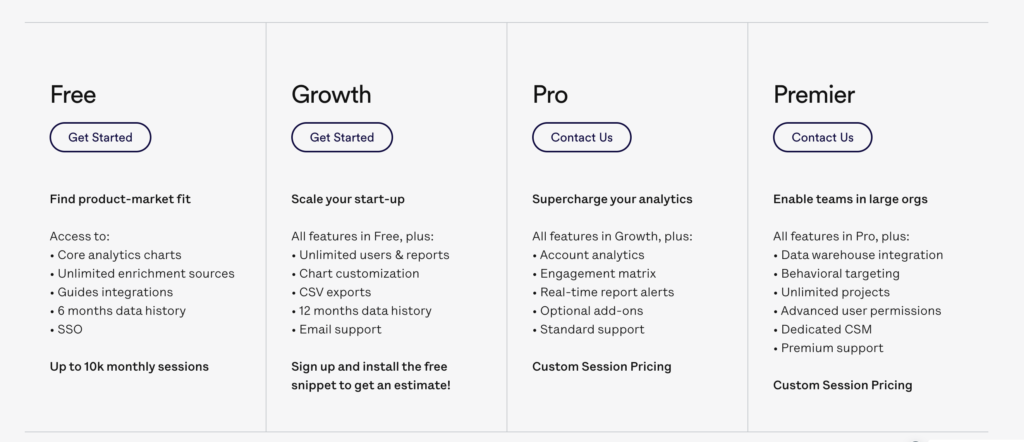
Heap Pros and Cons
Before considering Heap as a solution, it’s important to evaluate its pros and cons.
Heap Pros
- Automatic data capture for comprehensive user behavior analysis.
- Retroactive analysis for exploring new questions and hypotheses.
- User-friendly interface for visual data exploration.
- Powerful funnel analysis and user segmentation capabilities.
In summary, Heap empowers businesses with actionable insights to optimize their digital experiences and drive user engagement.
Heap Cons
- Learning curve for new users and implementation process.
- Pricing may be higher compared to some other analytics solutions.
- Limited customization options for data visualization and reporting.
Despite these considerations, Heap remains a powerful tool for businesses seeking a comprehensive and user-friendly analytics platform to understand and optimize user behavior.
8. Smartlook
Smartlook is a user behavior analytics tool that allows businesses to visually understand how users interact with their websites or mobile apps. It records user sessions, including mouse movements, clicks, and scrolling, and provides valuable insights into user behavior, allowing businesses to optimize their digital experiences and increase conversions.
Who Created Smartlook?
Smartlook was created by Lukáš Čech and Petr Janošík in 2016. Since then, Smartlook has gained popularity across various industries, including e-commerce, SaaS, travel, finance, and more. It is utilized by professionals in roles such as UX designers, product managers, marketers, and customer support teams to gain insights into user behavior and enhance their digital experiences.
Features
- Visual User Experience Analysis
- User Behavior Insights
- Conversion Optimization
- Customer Support and Troubleshooting
Smartlook Pricing
Smartlook offers different pricing plans to cater to the needs of businesses of all sizes. The pricing structure is typically based on factors such as the number of recorded sessions or the desired level of support. For detailed pricing information, it is recommended to visit the Smartlook website or contact their sales team.
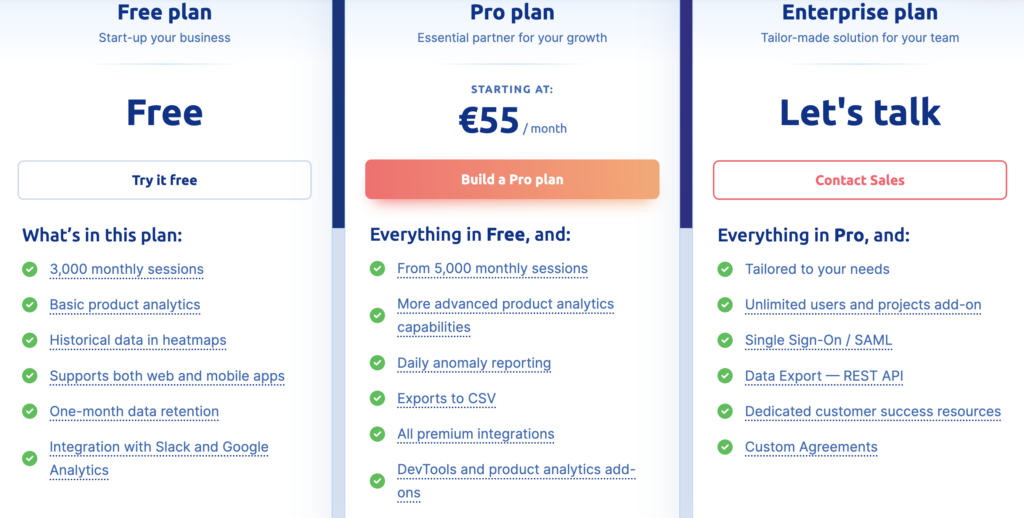
Smartlook Pros and Cons
When considering Smartlook as a user behavior analytics tool, it’s important to assess its pros and cons.
Smartlook Pros
- Visual representation of user sessions for easy understanding of user behavior.
- Heatmaps and clickmaps for identifying popular areas and user interactions.
- Session recordings to pinpoint usability issues and optimize user flows.
- Seamless integration with various platforms and frameworks.
- Provides valuable insights for conversion optimization and customer support.
In summary, Smartlook offers businesses a powerful solution to analyze user behavior, enhance the user experience, and drive conversions.
Smartlook Cons
- Limited advanced analytics capabilities compared to more comprehensive analytics platforms.
- Storage limitations for session recordings, depending on the chosen pricing plan.
- May require some technical setup and configuration for integration with specific platforms.
Despite these considerations, Smartlook remains a valuable tool for businesses seeking visual insights into user behavior and user experience optimization.
9. Zoho
Zoho is a suite of cloud-based software applications designed to help businesses streamline their operations and improve productivity. It offers a wide range of tools for various business functions, including customer relationship management (CRM), project management, finance, human resources, and more. Zoho provides an integrated platform that allows businesses to manage their processes efficiently and collaborate seamlessly.
Who Created Zoho?
Zoho was created by Sridhar Vembu and a team of developers in 1996. Since then, Zoho has grown to become a popular choice for businesses across industries, including small and medium-sized enterprises (SMEs) as well as larger organizations. Zoho is utilized by professionals in different job positions, including sales representatives, project managers, HR managers, finance professionals, and business owners.
Features
- Comprehensive Suite of Tools
- Seamless Integration
- Scalability and Flexibility
- Cost-Effective
- User-Friendly Interface
Zoho Pricing
Zoho offers different pricing plans for its various applications. The pricing structure may vary based on factors such as the number of users, modules selected, and additional features required. It is recommended to visit the Zoho website or contact their sales team for detailed pricing information.
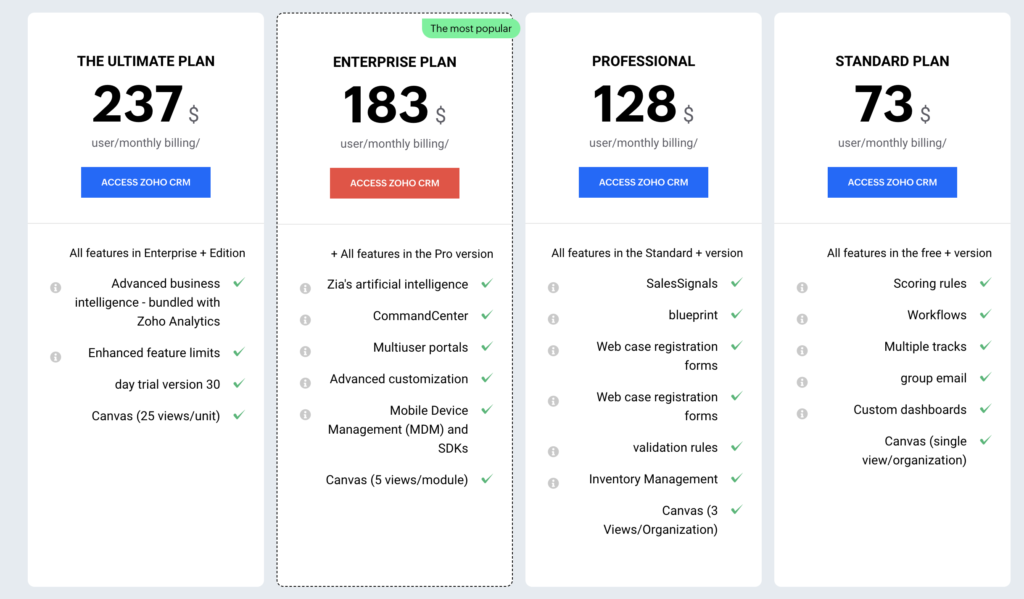
Zoho Pros and Cons
Understanding the pros and cons of Zoho can help businesses evaluate its suitability for their specific needs.
Zoho Pros
- Comprehensive suite of applications covering various business functions.
- Seamless integration and data flow between modules.
- Scalable and flexible solutions to accommodate business growth.
- Cost-effective pricing plans compared to other enterprise software providers.
- User-friendly interface for easy adoption and usage.
In summary, Zoho provides businesses with an integrated suite of cloud-based applications, offering a wide range of tools to streamline operations and enhance productivity.
Zoho Cons
- Advanced customization and integrations may require technical expertise.
- Some modules may have a steeper learning curve for new users.
- The extensive suite of applications may be overwhelming for businesses with simpler needs.
Despite these considerations, Zoho remains a popular choice for businesses seeking a comprehensive and cost-effective solution to streamline their operations and improve efficiency.
What Are Digital Analytics Tools?
Digital analytics tools refer to software applications and platforms that are designed to collect, analyze, and interpret data related to digital marketing and user behavior. These tools enable businesses to track and measure various metrics, such as website traffic, conversions, customer engagement, and marketing campaign performance. By gathering and analyzing this data, businesses can gain valuable insights into their online presence, user behavior, and marketing effectiveness.
How Can Digital Analytics Tools Benefit Your Business?
Digital analytics tools offer several key benefits that can significantly impact a business’s success. Here are a few important advantages:
Data-Driven Decision Making
Digital analytics tools provide businesses with accurate and detailed data about their online activities and user behavior. By analyzing this data, businesses can make informed decisions and optimize their marketing strategies. They can identify trends, understand customer preferences, and focus on high-impact areas to maximize their return on investment.
Improved Customer Experience
Digital analytics tools allow businesses to gain insights into how users interact with their websites, apps, and marketing campaigns. By understanding user behavior and preferences, businesses can tailor their digital experiences to meet customer expectations. This can result in improved engagement, increased customer satisfaction, and higher conversion rates.
Enhanced Marketing Performance
Digital analytics tools enable businesses to track and measure the performance of their marketing campaigns in real-time. By monitoring key metrics such as click-through rates, conversion rates, and customer acquisition costs, businesses can optimize their marketing efforts. They can identify successful campaigns, allocate resources effectively, and refine their strategies to achieve better marketing performance.
In summary, digital analytics tools provide businesses with the necessary insights and data to make informed decisions, improve customer experiences, and enhance their marketing performance. By leveraging these tools effectively, businesses can gain a competitive edge in the digital landscape and drive growth.
Conclusion/Wrapping Up
In conclusion, throughout this tutorial, we have explored a range of top digital analytics tools that can help marketers and businesses make sense of their data, optimize their strategies, and drive better results. We have delved into the features, benefits, pricing, and pros and cons of each tool, providing valuable insights to assist you in making an informed decision.
As a trusted source of information, I have provided you with a comprehensive guide to the best digital analytics tools available. My aim is to empower marketers, data analysts, and business owners like you with the knowledge and resources needed to navigate the complex world of digital analytics effectively.
By listening to the insights and recommendations presented here, you can save time and effort in researching and testing various tools. Trust in the expertise and reliability of this tutorial to make informed decisions that will drive the success of your marketing campaigns and overall business growth.
Remember, data is the key to unlocking your business’s potential. Embrace the power of digital analytics tools and take control of your data-driven journey to success.


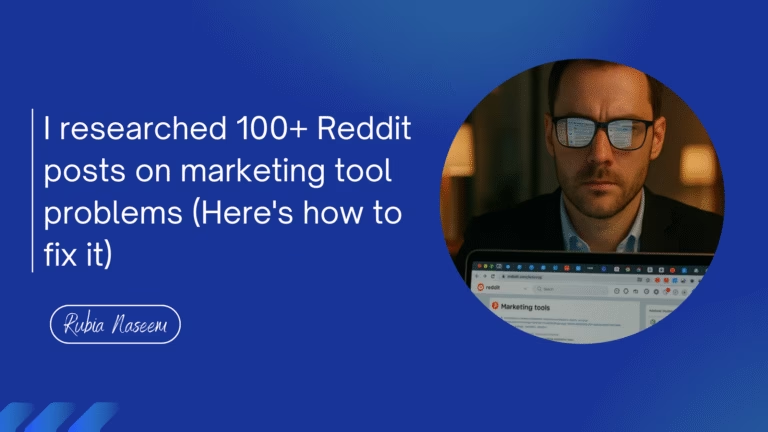
![Top 9 Zapier Alternatives in 2023 [Tried & Tested]](https://rubianaseem.com/wp-content/uploads/2023/09/standard-quality-control-collage-concept-1-768x524.jpg)
![7 Best Performance Management Tools 2023 [My 10 Years Exp]](https://rubianaseem.com/wp-content/uploads/2023/09/ezgif.com-gif-maker-5-768x432.webp)